http://robinolearycoaching.com/?page_id=129
Video analysis is an important and developing aspect of coaching. It not only gives the coach a second chance to watch over a certain performance, but it also allows the coach to discuss the performance with their client.
Neil Gresham was the first climbing coach to offer this service in the UK. He also stresses the importance of this on the MCA course. Offering your client a chance to see their performance allows them to really engage with your comments. I have been at the receiving end, and completely appreciated the constructive criticism. As a result, I use video analysis on a daily basis in my coaching. It can be used throughout a coaching session, for different reasons.
For those that are seeking first-time coaching, you can show them how they are climbing instinctively. It’s a very effective way to illustrate technical flaws During this first session, it is then possible to highlight improvement and a transformation in climbing technique. A joy for them to see and something not many coaches are offering today.
For your top end climber, it gives the coach a second chance to view what exactly went wrong. Sometimes the climber pops off for no obvious reason – video analysis allows you to review this and then discuss the reason(s) with your client…lessons learned and something to remember for the next redpoint effort.
Until recently, I was either using an HD video camera or my phone. If the client was bouldering, traversing or even on a short route, I would use my phone. It is easy to play back and the screen was fairly big. However, if it was on a higher route, I was either forced to ask someone else to film/belay or set the camera up at a distance.
Now I am not sure if you have used a video camera recently, but the screen is very small and if filmed from a distance, catching minute errors proves very difficult indeed. However, Coach’s Eye puts a stop to that!
Coach’s Eye is an app made by TechSmith. It can be downloaded from iTunes or Google Play for £2.99. Having used this on a few platforms now, I would recommend the mini iPad the most.
Now it still has the limitations of needing someone to hold the tablet, but otherwise it is hard to criticize. The most obvious benefit of this app on an iPad is that it allows the user to view the footage on a much larger screen – pinpointing with ease the flaws in the performance. This can be enhanced further with the use of Apple TV – for group viewings or coaching symposiums. However, the app becomes really beneficial once you delve deeper into the user options.
As you can see from the picture below, Coach’s Eye allows you to do far more than just watch the footage;

Watching the video footage in slow motion is always a bonus, but then the “time-line scroller” at the bottom allows the coach to slow this footage right down focusing on the real nuances of the footage.
From here, you have multiple other options. Typically seen in football replays, the arrows prove useful to show direction of drive and movement. If, for example, a climber is going for a dynamic move but driving in the wrong direction, or misfiring with arms and legs, this feature allows the coach to illustrate this to their client.
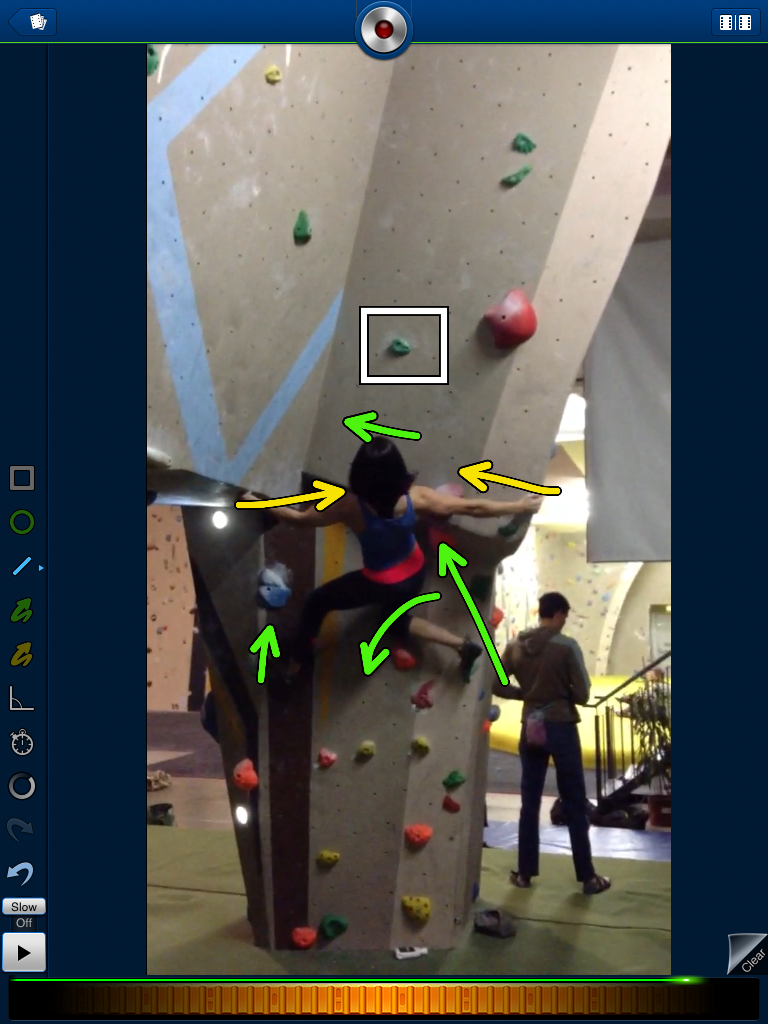
For route reading, clipping and shaking points, the app allows the coach to break down the climb using key reference points.

Coach’s Eye also allows you to share your footage online and look at videos that others’ have uploaded as well. If the climbing community take advantage of this feature, many will be able to learn from the analysis videos online. Whether it is the beta for a route/problem or the eye of a coach/another climber helping you realise why THAT move isn’t quite being completed.
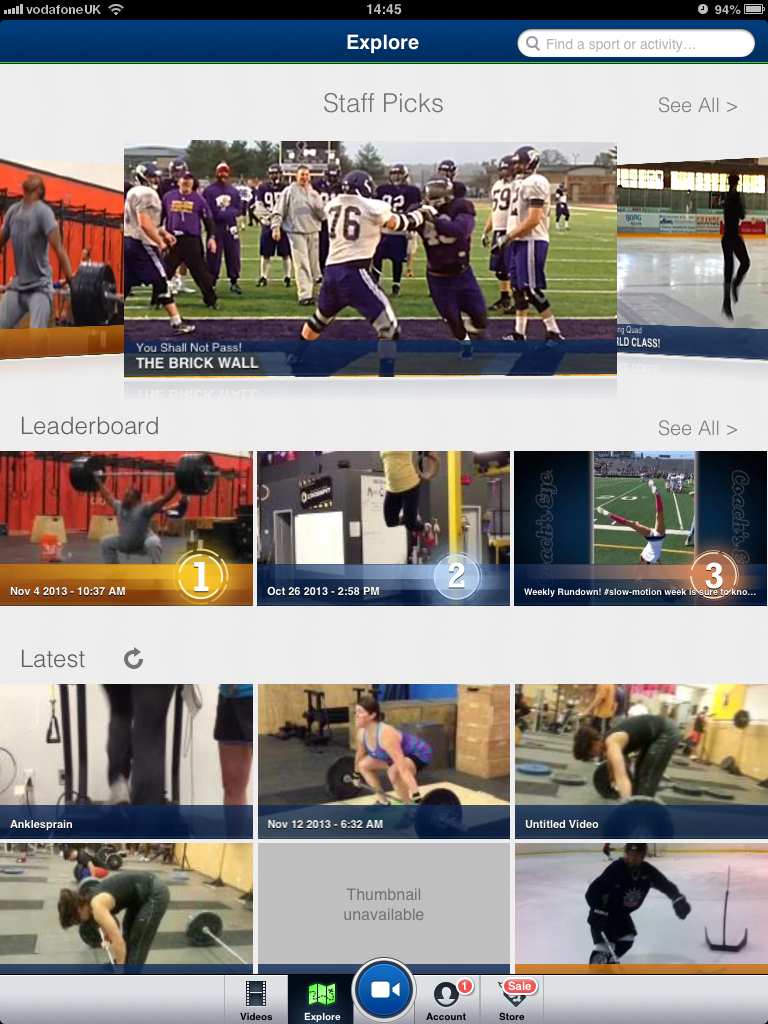
From here, we can start looking at the precision pack. Now this pack costs an additional £6.99. It provides the extra features of an “Angle Tool”, a “Timer Tool” and a “Spotlight Tool”.
The spotlight tool really helps when filming with other distractions nearby – great for competition analysis. The spotlight circles the area of focus and thus gives you only one thing to view.
The angle tool can be quite effective when viewing new projects outdoors or competition walls throughout the world. If you are looking for specificity, then you can see at what angle a route/boulder is and train effectively. It can also illustrate poor body positioning and distance from rock.
Personally I believe this pack is priced too highly. I think if the precision pack matched the price of the Coach’s Eye app (£2.99) then it would be far more popular. The features do prove useful for climbing, but I am not sure if the majority would merit the cost.
Below shows some screen shots of Libby Gamble on her early attempts of a tough V7 at the White Spider Centre in Kingston. Coach’s Eye allows you to slow down the footage so much that we can see every slight adjustment before the crux move. Here, Coach’s Eye allowed us to look at the footage and break down why Libby wasn’t quite latching the hold. The arrows help highlight that although Libby was dropping her knee and pushing to gain the height, the contact with the foot was being lost, meaning that too much weight was transferred onto her hand hence she couldn’t quite hold on enough.

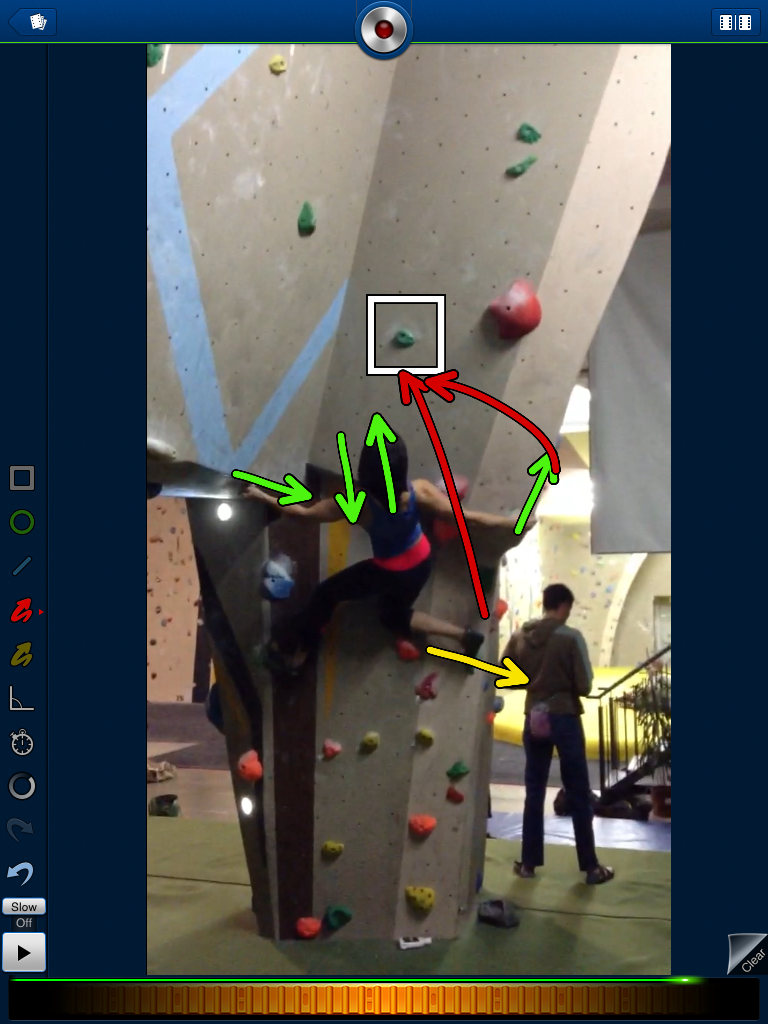
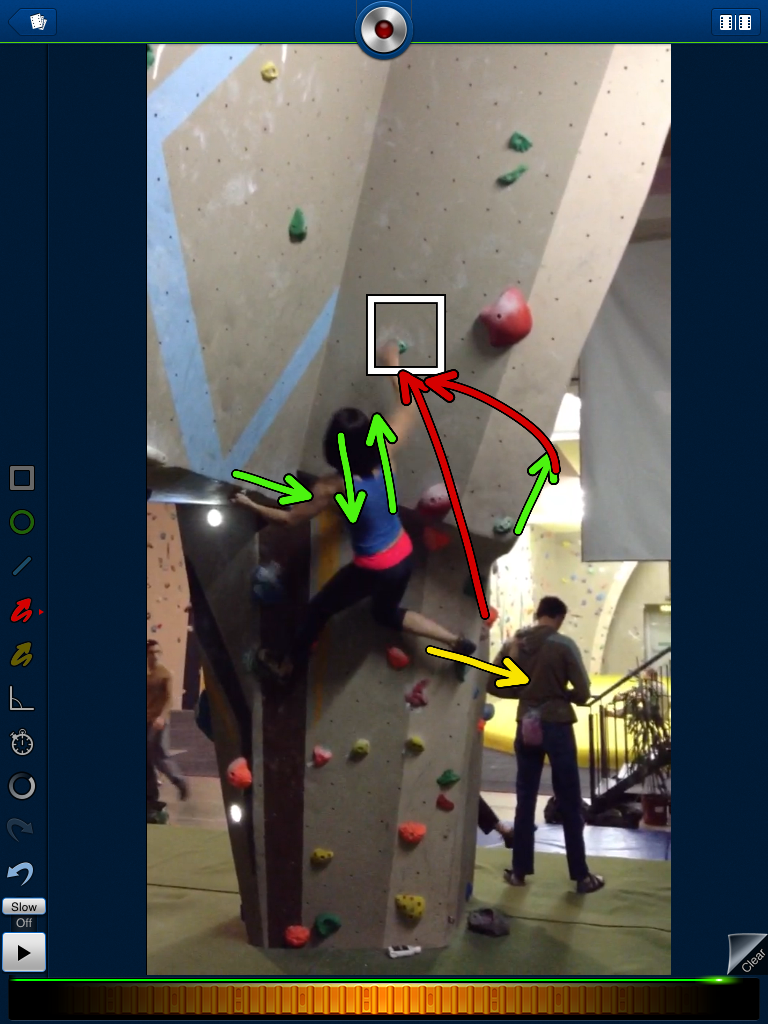

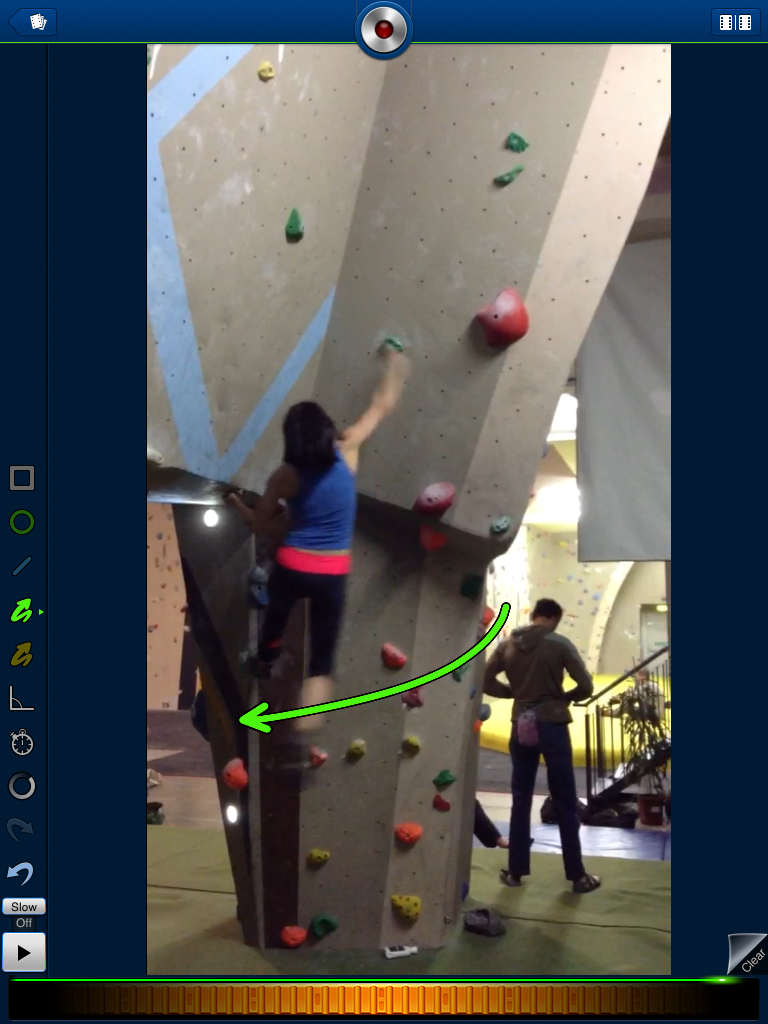
Although this example is quite easy for a coach to see, it really helps deliver the reasons and advice to the climber well.
Coach’s Eye then really proves its worth when you compare videos. If you fall off at a certain point of a route and a competitor doesn’t, a direct comparison can be invaluable. Even if you are isolating moves on a route or boulder problem, this can show the true reasons behind failure and success.
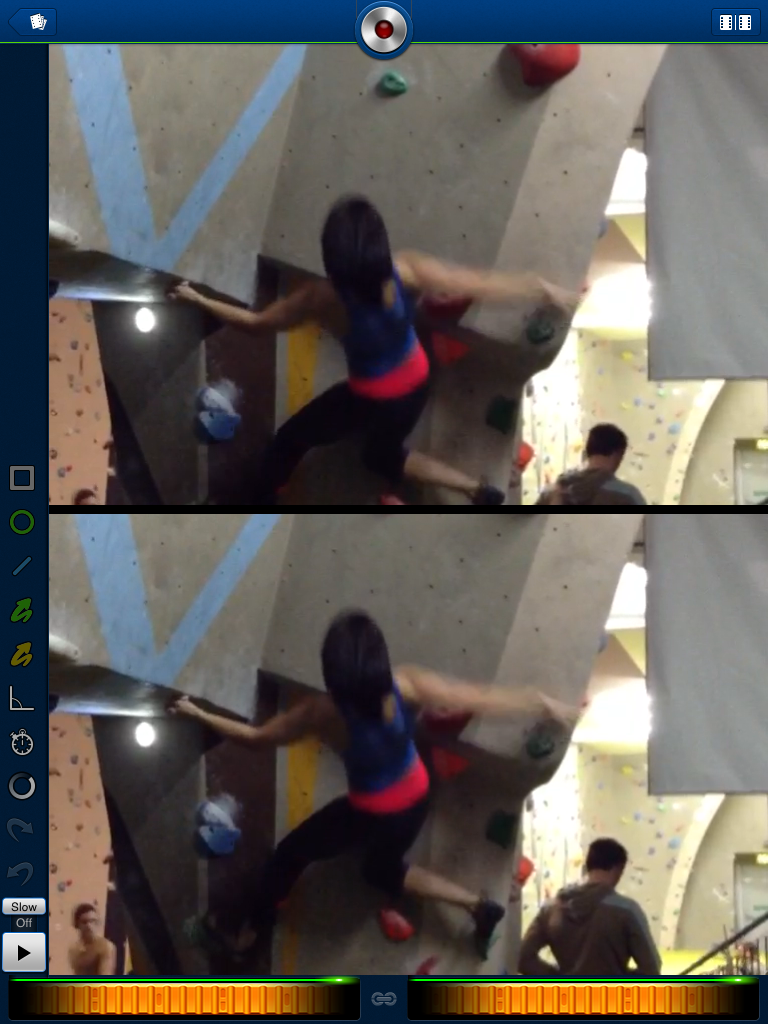
A second opinion is a valuable asset in any aspect of life. When it comes to climbing and specifically training or coaching, it is gold dust. Whether you are filming yourself on your latest projects, analysing your comp performance or a coach helping others progress, I cannot recommend the Coach’s Eye enough.
It is THE video analysis tool to be used in our industry and I encourage anyone coaching or even wanting that second opinion to get it. The app only costs £2.99!

Keep an eye out for this logo and visit their website to find out more.
http://www.coachseye.com/